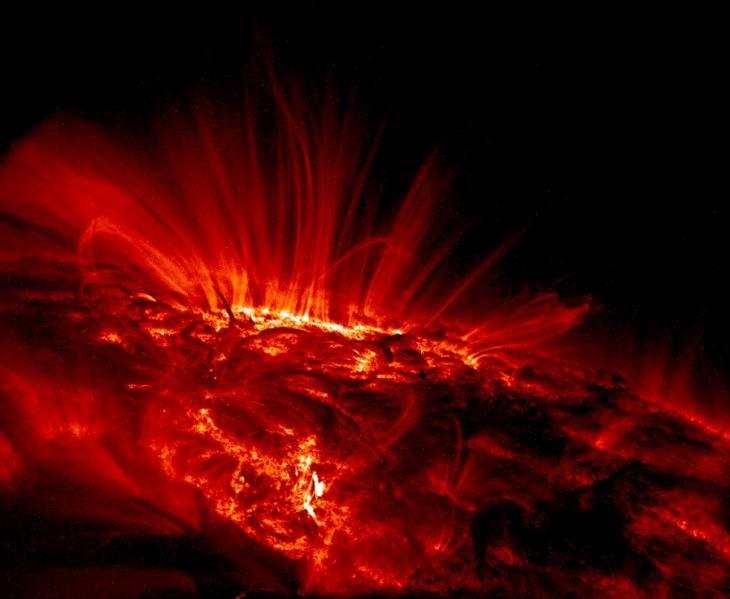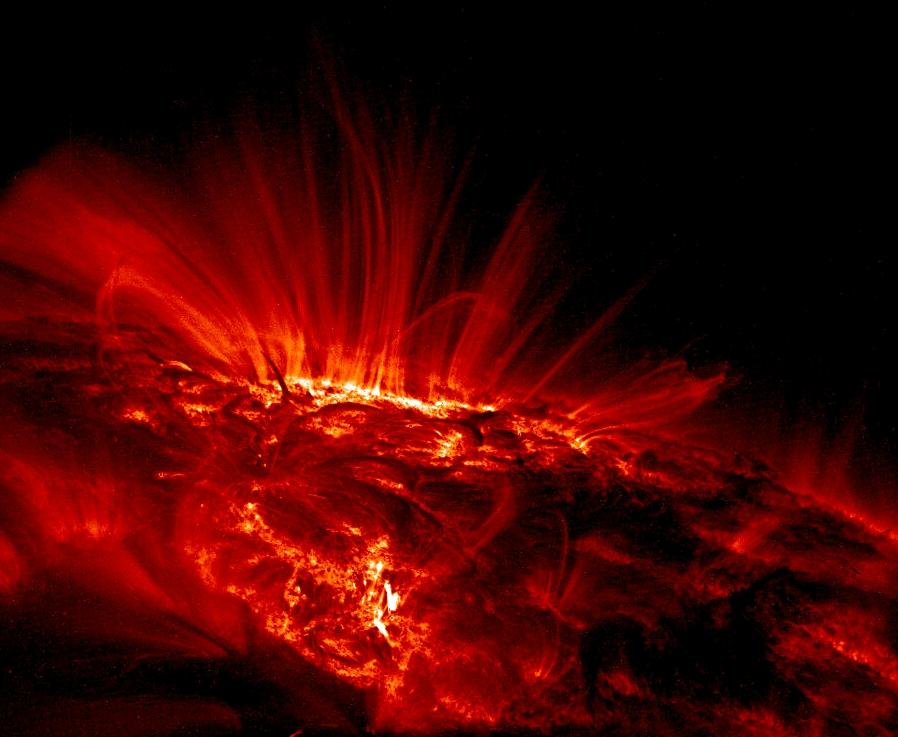 People
PeopleSolar century
Annie Maunder was a clever, determined and resourceful solar physicist who pursued her science despite significant obstacles. Her insights and observations remain valuable today.
 People
PeopleAnnie Maunder was a clever, determined and resourceful solar physicist who pursued her science despite significant obstacles. Her insights and observations remain valuable today.

Ultraviolet image of sunspots; bright red areas are at more than a million degrees.
Image Credit: NASA/TRACE
Annie Maunder was a clever, determined and resourceful solar physicist who pursued her science despite significant obstacles. Her insights and observations remain valuable today.
Annie Maunder is one of the first women fellows of the RAS and one who had one of the longest and most distinguished careers. She was a noted solar observer, who worked at the Royal Obserrvatory Greenwich after studying mathematics at Girton College Cambridge. She took part in many eclipse expeditions, devising her own camera with which to produce world-leading images of the solar corona. She published, edited a scientific journal and was a well-known figure in her field for decades. And, as Silvia Dalla and Lyndsay Fletcher note in their overview of her work, she was a sharp-eyed and incisive observer. All in all she is a thoroughly modern scientist.
Except that she wasn't. She was not awarded a degree from Cambridge – despite completing the Mathematical Tripos – becasue she was a woman. Her role at the Royal Observatory was a 'computer', a lowly post normally given to teenage boys and paid accordingly. Even that she had to resign on marriage, because married women were not employed by the Civil Service at that time. She was elected a Fellow of the RAS in 1916, but this was 24 years after she was proposed for Fellowship and rejected, after the usual ballot of Fellows present at the AGM voted against her and the other two women proposed at the same time.
Her persistence with science is all the more striking for rising above these deeply dispiriting obstacles. She was a founder member of the British Astronomical Association and stayed with them for most of her career, as first editor of the journal, among her other support. And, with her husband, Walter Maunder, she observed, considered and reasoned about sunspots, space weather and the nature of the Sun-Earth connection, throughout her scientific life.
Find out more about Annie Maunder and the other Women of the RAS at our OUP virtual issue page.
If you would like to submit an article to A&G Forum then please go here.